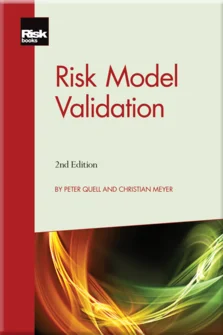Basics of Quantitative Risk Models
Introduction
Basics of Quantitative Risk Models
Usage of Statistics in Quantitative Risk Models
How Can a Risk Model Fail?
The Concepts of Model Risk and Validation
Model Risk Frameworks
Validation Tools
Regulation
The Short-term Perspective
A Benchmark Model for Market Risk
The Medium-term Perspective
Modelling and Simulation
Data
Model Results
Conclusion
Before examining aspects of risk model validation in detail, this chapter will explore the task of explaining how risk can be conceptualised, and how this conceptualisation can be used to design quantitative risk models. It starts with some historical factors concerning the evolution of quantitative risk modelling, explaining how the concept of risk is not as clearly defined as one might think, and how its perception and modelling contain many subjective aspects.
This will be followed by a description of the basic elements of QRMs, which will be relatively generic and applicable to different kinds of risk assessment problems, such as in business planning or risk management in insurance companies or the banking industry. The chapter will then explore features of risk and risk diversification that were already present in ancient times, using an historical example to pinpoint key elements. In more modern times, the development of probability theory and statistics from the late 17th century onward provided an important context for how quantitative risk assessment could be conceptualised. The chapter will therefore start to explore the usage of statistics in QRMs and present some
Copyright Infopro Digital Limited. All rights reserved.
As outlined in our terms and conditions, https://www.infopro-digital.com/terms-and-conditions/subscriptions/ (point 2.4), printing is limited to a single copy.
If you would like to purchase additional rights please email info@risk.net
Copyright Infopro Digital Limited. All rights reserved.
You may share this content using our article tools. As outlined in our terms and conditions, https://www.infopro-digital.com/terms-and-conditions/subscriptions/ (clause 2.4), an Authorised User may only make one copy of the materials for their own personal use. You must also comply with the restrictions in clause 2.5.
If you would like to purchase additional rights please email info@risk.net











